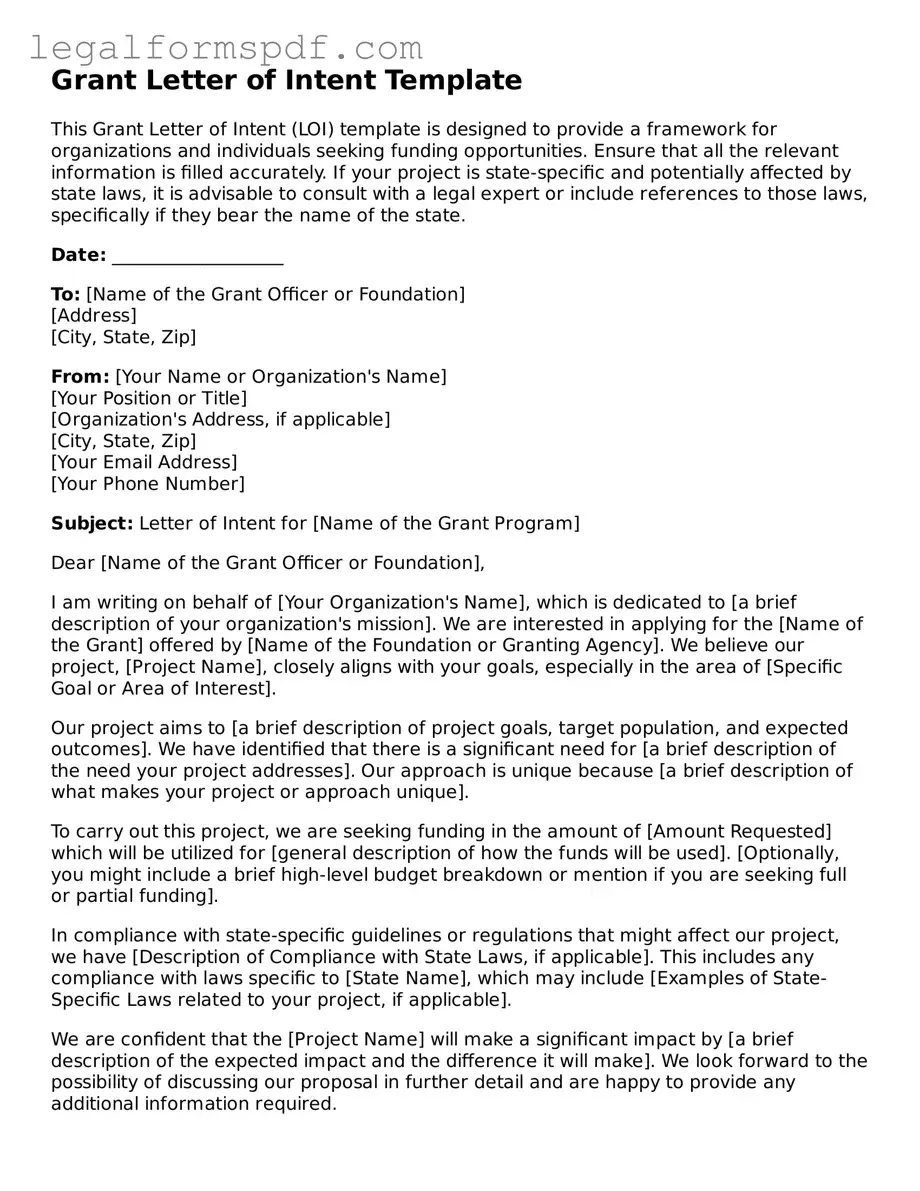Grant Letter of Intent Template
This Grant Letter of Intent (LOI) template is designed to provide a framework for organizations and individuals seeking funding opportunities. Ensure that all the relevant information is filled accurately. If your project is state-specific and potentially affected by state laws, it is advisable to consult with a legal expert or include references to those laws, specifically if they bear the name of the state.
Date: ___________________
To: [Name of the Grant Officer or Foundation]
[Address]
[City, State, Zip]
From: [Your Name or Organization's Name]
[Your Position or Title]
[Organization's Address, if applicable]
[City, State, Zip]
[Your Email Address]
[Your Phone Number]
Subject: Letter of Intent for [Name of the Grant Program]
Dear [Name of the Grant Officer or Foundation],
I am writing on behalf of [Your Organization's Name], which is dedicated to [a brief description of your organization's mission]. We are interested in applying for the [Name of the Grant] offered by [Name of the Foundation or Granting Agency]. We believe our project, [Project Name], closely aligns with your goals, especially in the area of [Specific Goal or Area of Interest].
Our project aims to [a brief description of project goals, target population, and expected outcomes]. We have identified that there is a significant need for [a brief description of the need your project addresses]. Our approach is unique because [a brief description of what makes your project or approach unique].
To carry out this project, we are seeking funding in the amount of [Amount Requested] which will be utilized for [general description of how the funds will be used]. [Optionally, you might include a brief high-level budget breakdown or mention if you are seeking full or partial funding].
In compliance with state-specific guidelines or regulations that might affect our project, we have [Description of Compliance with State Laws, if applicable]. This includes any compliance with laws specific to [State Name], which may include [Examples of State-Specific Laws related to your project, if applicable].
We are confident that the [Project Name] will make a significant impact by [a brief description of the expected impact and the difference it will make]. We look forward to the possibility of discussing our proposal in further detail and are happy to provide any additional information required.
Please find attached [any documents or supplementary materials you are including, such as a project proposal, budget details, or organizational brochures]. We appreciate your consideration of our request and hope to hear from you soon regarding the next steps in the application process.
Thank you for your time and consideration.
Sincerely,
[Your Signature, if sending by mail]
[Your Typed Name]
[Your Position or Title]
Optional Attachments Section
Attachments:
- Project Proposal
- Budget Details
- Organizational Brochure
